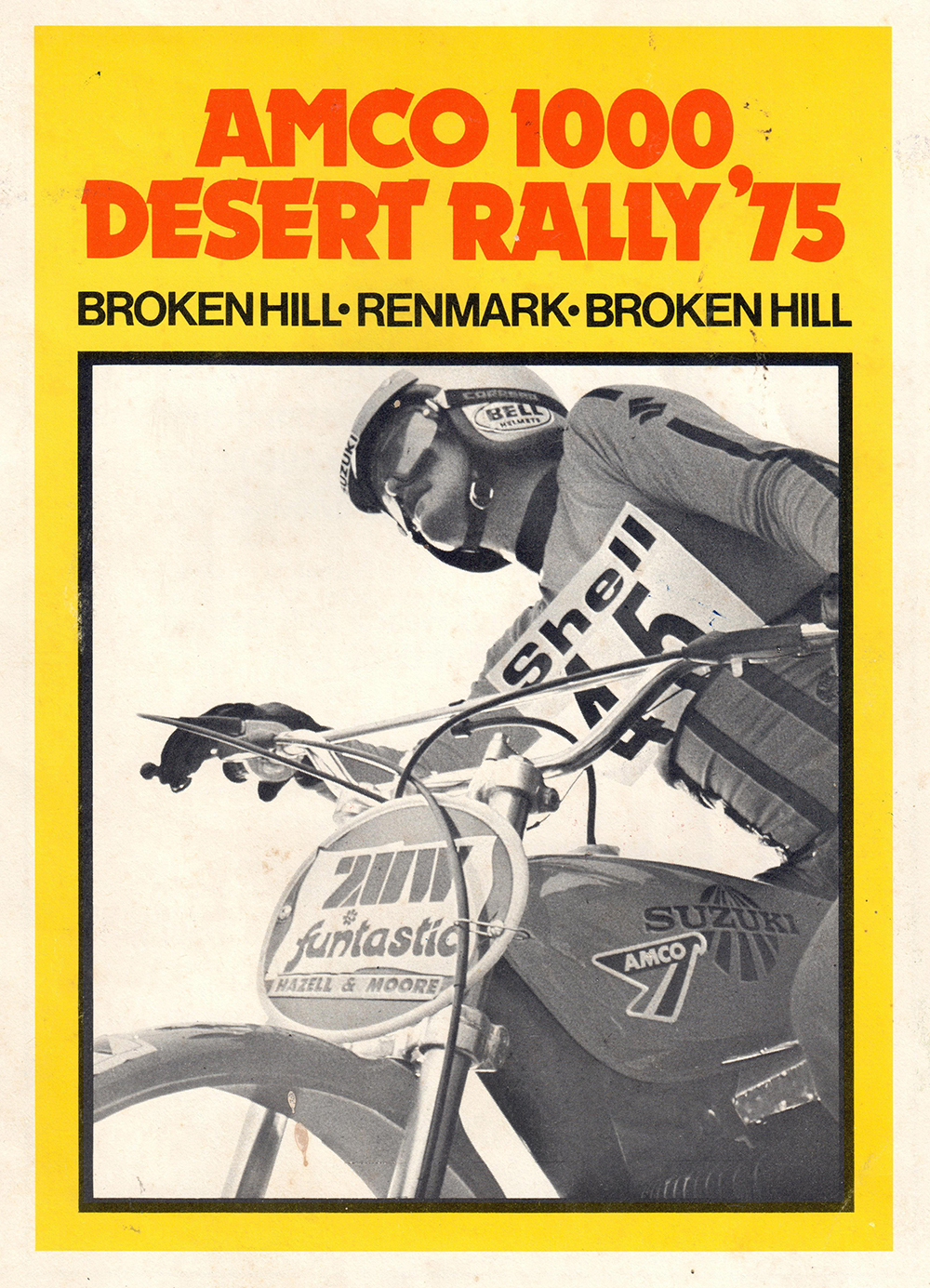Australia's first cross-country race was feared and strenuous
The announcement of the 1975 AMCO 1000 Desert Rally caused great consternation among the good citizens of Broken Hill. The hot topic was that the proposed desert rally would involve motorcycles, the riders of which were pilloried in the press as ‘bad elements’. Worse was to come. It was said there’d be 1000 riders – a rumour that became fact weeks before the event was scheduled for the June long weekend. To compound the confusion, word spread that the incredible $5000 prizemoney was being put up by the proprietor of the Kings Cross all male revue Les Girls. On the Queen’s Birthday!
By the time the first contestants dribbled into Broken Hill, substantial police reinforcements were in place but it soon became obvious that none of the 97 entrants that signed on were there to cause trouble. The $5000 purse had attracted the era’s top motocross and enduro riders. Names such as Bert Flood, Hans Appelgren, Jim Dowsett, Rob Haskins, Laurie Alderton, et al. Speedway star Jim Airey also turned up, however it was John ‘Golden Tonsils’ Laws that featured in the spotlight.
Come race day, the riders’ briefing was exactly that. “We’re going to follow the police car in convoy down the main road for about 50km to the start.” However, once clear of town, the patrol car ramped it up to more than 140km/h, speeding past the Clerk of Course and the Official Starter. So fast, in fact, only the Open Class bikes had anywhere near the power to keep up. Some 50km out of town the police waved goodbye.

Even though the AMCO 1000 was the first event of its kind ever held in Australia, the more experienced competitors took it relatively easy, anticipating a refuel and an official start. A handful of novices raced each other for the next 30km before literally running into a film crew beside the correct route. They immediately raced back the way they’d come, which resulted in a multiple collision – and multiple injuries – before any of the riders involved had even collected their start timecard.
Meanwhile, back at the start, the riders faced an open paddock in lines of 20 with the instructions: “Head west until you reach the fence, turn south and follow the fence.” A course car was to mark any deviations with arrows until the riders returned to the north-south fenceline. However, the course car broke down – and had no back-up. The first ‘control’ was unmanned and with plenty of other fences in the area, many riders got lost.
By then the fast guns had refueled, collected their timecards and roosted into the fray, only to terrorise the novices riding in circles out front. The CMF (Civilian Military Forces) engaged to coordinate time controls and facilitate communications were issued with radios that had a range of less than 40km.

And the situation got worse, yet the extent of the catastrophe wasn’t fully realised until an hour after dark when only 41 riders had reached the Wentworth-Renmark Road junction. All night, station hands from Belmore and Tarawi stations dropped ute-loads of exhausted riders at Renmark Showgrounds. Finally sweep vehicles from the Silver City MCC accounted for the last of the stragglers.
The following day there was nothing to do but shorten the course for the return run to Broken Hill. John Atkinson, a dairy farmer from Bombala – who had gone 31 hours without sleep just to arrive in Broken Hill less than half hour before the start – was a worthy winner on his Husqvarna 400, despite a malfunctioning clutch and no rear brake. Rod Tingate on a Milledge Bros Yamaha 400 was second, and Laurie Alderton on a Montesa 250 completed the podium.
It was reported that of the 97 starters, only 48 made the finish line and despite scores of injuries, there were only seven hospitalisations. Police delayed the finishing ceremony until all competitors were accounted for.

Words Peter Whitaker Photography Crocodile Press